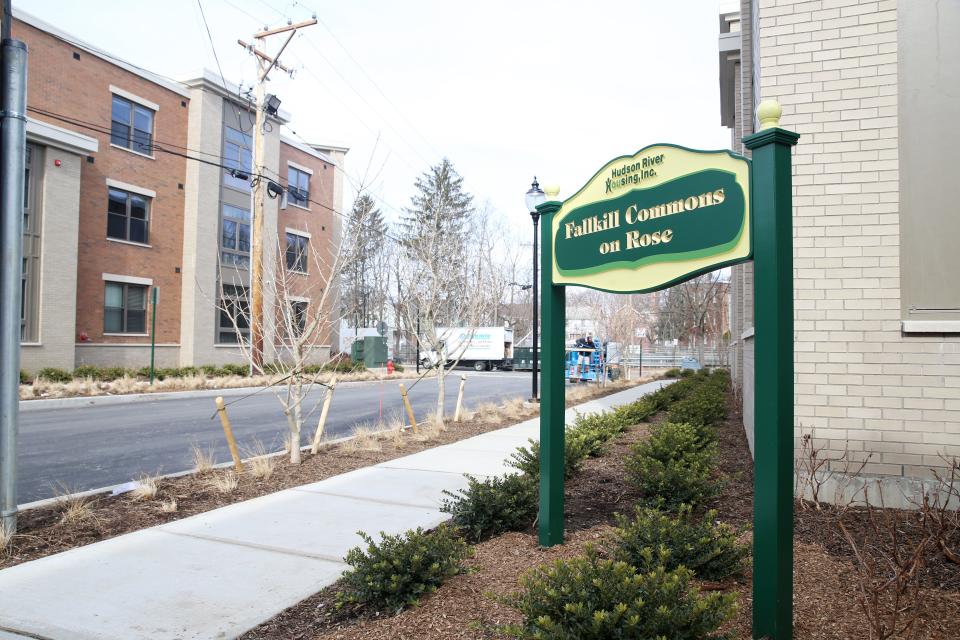New York has a chance to get supportive housing right this year. We have to get there
Solving social challenges like homelessness and housing insecurity is often viewed as impossible: the dynamics seem far too interwoven and complex for there to ever be a straightforward solution.
The reality is that we can help address chronic homelessness on the individual level. And when given the proper tools — most notably well-resourced supportive housing programs that provide on-site services along with affordable housing options — our success in preventing formerly unhoused individuals from returning to the streets is significant.
Consider Fallkill Commons, a 78-unit affordable and supportive housing residence nestled beside Fallkill Creek in the City of Poughkeepsie. The property, which opened in 2020 and uses the creek’s natural edges and plants to create beautiful waterfront overlooks, is catalyzing personal growth for residents like Amelia Nejame and Kenneth Kelly through the creation of a stable community.

Nejame says Fallkill’s on-site counseling helped her tackle mental health challenges, and has felt empowered through monthly tenant meetings. Kelly, meanwhile, has been able to easily access on-site Narcotics Anonymous meetings to overcome substance use which has given him confidence to become more involved in the community. He spearheaded two block parties this past summer where neighborhood residents, community organizations, and elected officials aimed to bring the community together.
Both Nejame and Kelly struggled with housing insecurity, and both are now thriving due to the essential services directly woven into their living situation. Their experience is a prime example of the power of supportive housing – something every vulnerable New Yorker should be able to access, but unfortunately cannot, due to longstanding state funding inequities.
This is a problem that must be addressed in the 2024-25 state budget currently being negotiated in Albany. If the governor and lawmakers fail to do so, thousands of supportive housing units across New York are in jeopardy of coming offline, potentially forcing tenants back into homelessness.
Hudson River Housing, manages 482 supportive housing units, 408 of which are funded by the New York State Supportive Housing Program (NYSSHP). When it was first created close to four decades ago, NYSSHP was a cutting-edge, nation-leading program. But it hasn’t seen a significant funding increase since its inception, and the tenants and workers who fall under NYSSHP’s umbrella are paying the price for this shortfall.
NYSSHP has been outpaced by newer programs like the Empire State Supportive Housing Initiative (ESSHI), which offers far more resources to serve the same population. While NYSSHP units receive a meager $2,964 for individuals and $3,900 for families annually, ESSHI units benefit from a substantial $25,000 annual allocation, covering case management, programming, and building operations.
ESSHI funding is directly responsible for the successes at Fallkill Commons. NYSSHP-funded units simply cannot afford to offer their residents the same programs. Many NYSSHP units are scattered throughout the area and require case workers to travel between them. Lacking a centralized location and staff, NYSSHP residents cannot benefit from tight-knit communities like the one that exists at Fallkill Commons.
This long-standing funding disparity has now reached a tipping point. Statewide 9,000 NYSSHP-funded supportive housing units risk going offline without additional funding. There is a solution at hand: Convert these endangered units to ESSHI over the next five years. Year One of this conversion would cost $32 million – a small fraction of the state’s multi-billion annual budget that can make an enormous difference in the lives of formerly unhoused New Yorkers.
When properly funded, supportive housing makes a huge difference in peoples’ lives. Residents are empowered and assisted with major life milestones, including returning to school, acquiring vital documents like driver’s licenses, and finding financial stability – all possible due to active support and a stable roof.
Hudson River Housing currently has 160 units in our real estate development pipeline for ESSHI-funded programs. If approved, these units are poised to help many more people in need of supportive housing services.
Yet, we cannot fully look ahead if we leave people behind. Hudson River Housing is proud of the care we give to our residents and our team of dedicated staff members. This simple funding conversion from NYSSHP to ESSHI would provide the resources to ensure all our residents have equal access to vital community programs and services. We joined 150 other supportive housing staff members and tenants in Albany on Wednesday at the Supportive Housing Network of New York Annual Lobby Day to make this case to lawmakers.

Together, we can create a future where everyone has the support they need to thrive, building a foundation for a brighter tomorrow — and proving that, with just a little political courage and foresight, seemingly intractable social problems can be solved after all.
Christa Hines is president and CEO of Hudson River Housing, Inc.
This article originally appeared on Poughkeepsie Journal: NY supportive housing must be an Albany priority

